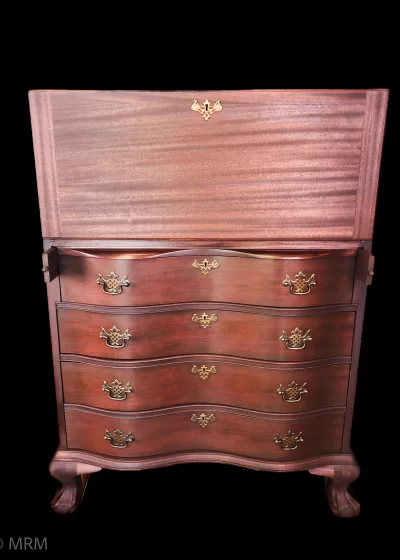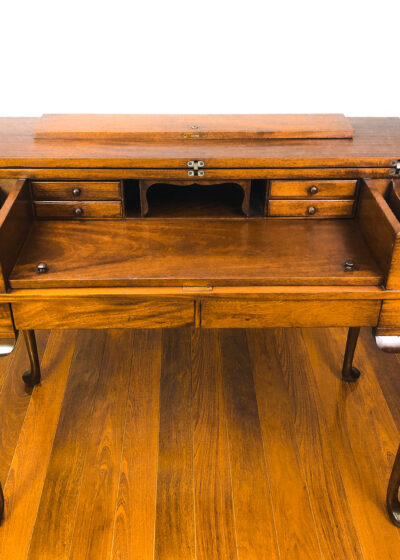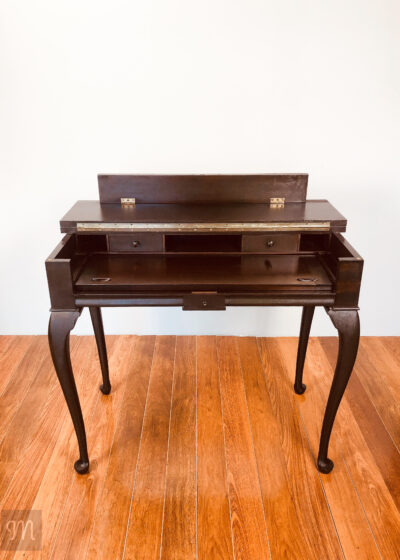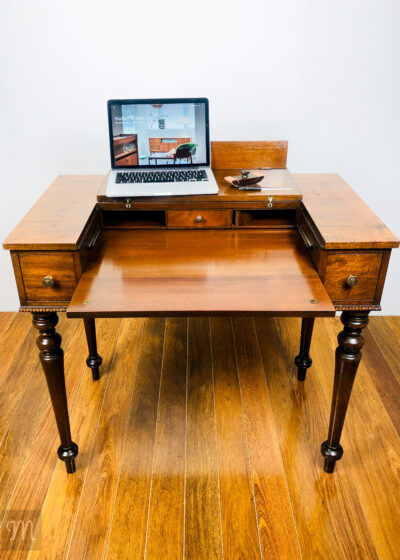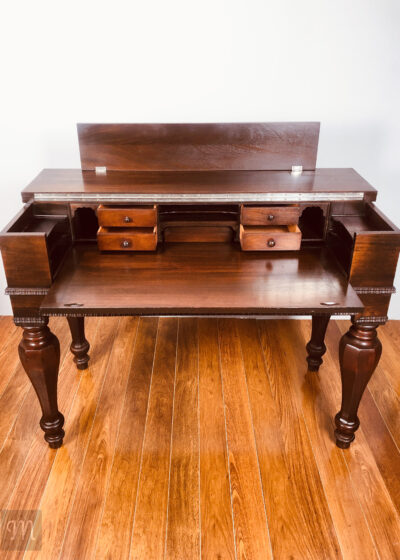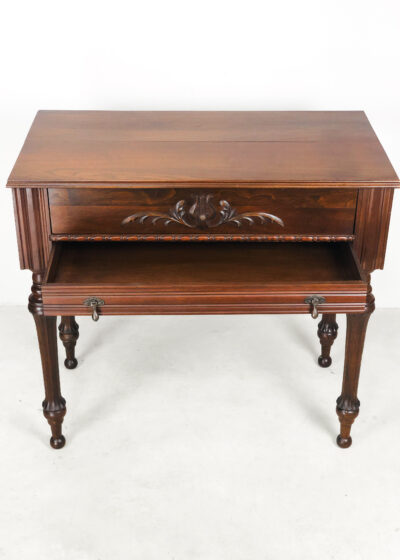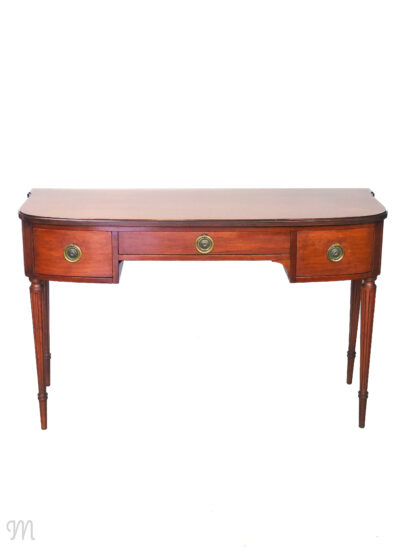Mahogany
From Colonial Comfort to Art Deco Elegance: A History of Mahogany in Antique Furniture
Mahogany, with its rich reddish-brown hues, intricate grain patterns, and durable nature, has captivated furniture makers for centuries. More than just a beautiful wood, its journey through history mirrors the evolving tastes and technologies of different eras, leaving an indelible mark on the landscape of antique furniture. This article explores the rise and evolution of mahogany as a cherished material, tracing its impact on design, craftsmanship, and the cultural landscape of furniture making.
Early Encounters and Colonial Appeal:
Mahogany’s story begins in the lush rainforests of Central and South America, where indigenous cultures long used its sturdy trunks for canoes and ceremonial carvings. In the 17th century, European explorers encountered its captivating beauty and potential. Early mahogany imports focused on shipbuilding due to its resistance to rot and saltwater. However, by the early 18th century, its aesthetic qualities resonated with affluent colonists in North America and Europe.
The golden age of mahogany arrived in the mid-18th century, coinciding with the flourishing of Georgian and Rococo styles. Colonial craftsmen, renowned for their meticulous carving and joinery, found in mahogany the perfect canvas. Its smooth surface and resistance to warping allowed for intricate detailing, delicate curves, and the bold cabriole legs that became hallmarks of the era. Grand pieces like serpentine chests of drawers and elaborate chairs showcased the warmth and elegance of the wood, solidifying mahogany’s status as a symbol of wealth and sophistication.
The Age of Refinement and Technological Advancements:
As the 18th century progressed, Neoclassical and Federal styles emerged, dictating a shift towards clean lines and symmetry. Mahogany retained its prominence, adapting to the new aesthetic. Craftsmen employed bookmatched veneers, highlighting the wood’s natural patterns, and incorporated inlays of contrasting woods like satinwood and rosewood, creating sophisticated marquetry designs. Technological advancements, such as the invention of the circular saw, simplified production and contributed to the wider availability of mahogany furniture.
The 19th century ushered in a period of eclecticism, with revival styles like Victorian and Gothic drawing inspiration from historical periods. Mahogany continued to play a central role, adapting to the tastes of each era. Victorian mahogany furniture exhibited ornate carvings, heavy embellishments, and rich, dark finishes, often paired with velvet or damask upholstery. Gothic Revival pieces incorporated pointed arches, intricate fretwork, and darker stains, reflecting the romanticism of the period.
20th Century Innovation and Modern Applications:
The 20th century witnessed a shift towards minimalist aesthetics and innovative materials. However, mahogany retained its relevance in Art Deco and Mid-Century Modern styles. Art Deco embraced its rich hues and bold grain patterns, incorporating geometric shapes and sleek lines to create statement pieces like credenzas and cocktail tables. Mid-Century Modern designers, recognizing its warmth and timeless beauty, employed mahogany alongside contrasting woods and glass, creating functional and elegant furniture that redefined modern homes.
Enduring Legacy and Contemporary Appreciation:
Today, antique mahogany furniture continues to hold cultural and commercial value. Its enduring popularity can be attributed to its exceptional durability, timeless aesthetics, and historical significance. Each piece whispers tales of craftsmanship, changing tastes, and the lives it has touched throughout its journey. Collectors cherish its inherent beauty and historical pedigree, while contemporary designers reinterpret its classic appeal in modern contexts.
In conclusion, mahogany’s story in antique furniture is not just about a versatile wood, but about a journey of artistic expression, technological innovation, and societal transformation. From the grand pieces of colonial America to the sleek lines of Art Deco, mahogany has adapted, evolved, and continued to captivate furniture enthusiasts across generations. Its legacy lives on in museums, private collections, and contemporary homes, serving as a testament to the enduring power of beauty, craftsmanship, and the timeless allure of this remarkable wood.
This article provides a comprehensive overview of mahogany’s use in antique furniture, touching upon its historical context, design trends, and cultural significance. Feel free to suggest any specific points you would like me to delve into further, or any additional information you’d like me to incorporate for a more detailed exploration of this captivating subject.
Showing all 7 results
-
American Chippendale Mahogany Oxbow Slant Top Desk
$850.00 -
Antique Mahogany Spinet Writing Desk c.1900
$2,295.00 -
Antique Petite Mahogany Spinet Writing Desk c.1900
$1,245.00 -
Colonial Manufacturing Company Writing/Spinet Desk c.1880 – 1900’s
$1,725.00 -
H.E. Shaw Grand Spinet Writing Desk: A Scholar’s Sanctuary
$2,510.00 -
Sligh Furniture Company Honduras Mahogany Spinet Desk
$1,635.00 -
Stunning Widdicomb Mid-Century Modern Mahogany Writing Desk
$3,750.00

